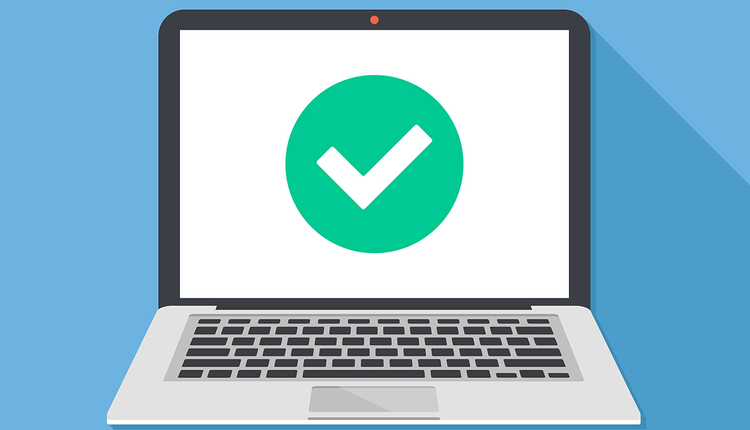
Organizations fail when they try to make ADA compliance a list of checkboxes. True accessibility is about providing a usable experience to people with disabilities who have real needs. Accessibility is social responsibility with common sense that companies need to take seriously. People with disabilities navigate websites and documents in a variety of ways.
People who are blind or partially sighted use screen readers to navigate a digital document. People who are deaf or hard of hearing use captioning or sign language for videos, online presentations and podcasts. People whose disabilities affect their ability to use a mouse and/or keyboard, use voice recognition software to control their computers and other devices with verbal commands.
Websites and documents created by architects, designers and content creators without disabilities unintentionally create unnecessary barriers that make it difficult or impossible for people with disabilities to navigate those websites and documents. This is not any different than physical barriers, such as steps, that prevent people with certain disabilities from entering a building. These unintentional digital barriers prevent people with disabilities from accessing information and programs to which they have an equal right to access.
Quite often, compliance and accessibility are confused with usability. A document can be made compliant with accessibility standards and still be unusable by the end user. For example, if an instructional manual that has 5 pages of text is really 5 pages of scanned images with associated, limited, alternate text that read, “Page 1, index,” “Page 2, manual details,” “Page 3, more details,” etc., then the content of these pages is useless to a screen reader user, even though the document might pass an automated compliance tester. When making information compliant with accessibility standards, it is imperative that they are usable, too. This constitutes true accessibility.
ADA digital compliance standards
ADA Title III website compliance is difficult because the law doesn’t specify what is needed to make a website accessible. As Former Assistant Attorney General Stephen Boyd wrote to Congress, “Absent the adoption of specific technical requirements for websites through rulemaking, public accommodations have flexibility in how to comply with the ADA’s general requirements of nondiscrimination and effective communication. Accordingly, noncompliance with a voluntary technical standard for website accessibility does not necessarily indicate noncompliance with the ADA.”
Why ADA Title III?
In the US, the legal environment makes it advantageous for someone with disabilities to sue businesses under ADA Title III. If the verdict is in favor of the plaintiff, then the defendant must pay the plaintiff’s legal fees. The person suing has nothing to lose by filing a lawsuit. This simply means that organizations need to make public-facing information accessible to avoid expensive legal repercussions and damaging the company name.
Web Content Accessibility Guidelines (WCAG) and Section 508 Standards
The US government is flexible in how businesses comply with the ADA’s general requirements of nondiscrimination and effective communication, which applies to digital (website and document) accessibility. Therefore, organizations can choose how their programs, services and goods provided online are accessible to all people with disabilities.
The Department of Justice (DOJ) often refers to existing technical standards to provide helpful guidance for digital accessibility. These include the Web Content Accessibility Guidelines (WCAG) and the Section 508 Standards, which the federal government uses for its own websites. Currently, WCAG 2.1 is the best measure of website accessibility.
WCAG 2.1 guidelines have a three-tiered grading system:
- Level A: Website is only accessible by some users
- Level AA: Website is accessible by almost all users
- Level AAA: Website is accessible by all users
WCAG 2.1 has four core principles for accessibility, which is where common sense is needed for usability and true accessibility—and not a checkbox compliance system.
Be perceivable — All users need to have the ability to perceive all information that appears on a website. That includes text, images, documents, videos, downloadable files, etc. For example, if a website user is blind or partially sighted, there needs to be an option to listen to the text. If they are deaf or hard of hearing, then closed captioning is required. Sign language is optional.
Be operable — All website users need to be able to navigate the website with ease and use any tools provided, e.g., search. That means there must be multiple methods to search the website, retrieve the results and ingest them.
Be understandable — Website and document users need to be able to understand the information they are accessing, whether that be reading captions or listening via a screen reader.
Be robust — People with disabilities need to have the same digital experience as those without disabilities. Therefore, all content, no matter how it is delivered, needs to be universal. That means images need robust descriptions, read order must be correct and all content provided should have the same full user experience.
Website and Document Accessibility Barriers To Overcome
Once an organization realizes the importance of making a website and its contents both compliant and usable, there are things that need to be considered — and avoided — in order to make this happen. These are:
Poor color contrast: People with limited vision or color blindness cannot read text if there is not enough contrast between the text and background, such as yellow text on a light gray background.
Use of color alone to give information: People who are colorblind can’t distinguish certain colors from others. This makes it difficult for them to access information that is conveyed using only color cues. Also, screen readers do not tell the user the color of text on a screen. A person who depends on screen readers to ingest information will not know that color is meant to convey certain information.
Lack of text alternatives (“alt text”) for images: People who are blind or partially sighted will not be able to understand the content and purpose of images, such as photographs, illustrations and charts, when no text alternative is provided. Alternate text conveys the purpose of images, photographs, illustrations and charts.
No captions on videos: People with hearing disabilities will not be able to understand information communicated in a video if the video does not have captions.
Inaccessible online forms: People with disabilities will find it difficult to complete, understand and accurately submit forms without things like:
- Labels that screen readers can convey to their users (such as text that reads “credit card number” where that number should be entered)
- Clear instructions stating how to complete the form
- Error indicators, such as alerts telling the user to complete a missed or incorrect form field
Inaccessible PDF documents: People who are blind or partially sighted use screen readers to read text aloud. PDF documents that are created by scanning documents and, thus, creating an image, are not accessible and, therefore, need to be remediated to make them accessible and compliant.
Mouse-only navigation (lack of keyboard navigation): People with disabilities who cannot use a mouse or trackpad will not be able to access web content if they can’t navigate a website using a keyboard and keyboard shortcuts.
Compliance without usability: People with disabilities require websites and documents to be usable with screen readers and closed caption devices. If a PDF document passes every WCAG and PDF/UA standard, but cannot be navigated successfully due to incorrect reading order, incorrect alt text or incorrect heading structures, then the document is unusable.
Accessibility is a social responsibility: Accessibility is social responsibility with common sense. There isn’t a checkbox or one-size-fits-all approach for true accessibility. With some common sense, following well laid out principles and guidelines from WCAG and trusting feedback from users who have disabilities, it is possible to make a website and its contents accessible and usable. And more importantly, it is the right thing to do.
An electronic document industry pioneer, Ernie Crawford is the President/CEO and founder of Crawford Technologies. One of only a small number of people worldwide with a Master Electronic Document Professional (M-EDP) designation, Ernie has more than 30 years of senior marketing and management experience in the high-volume electronic printing market.



















